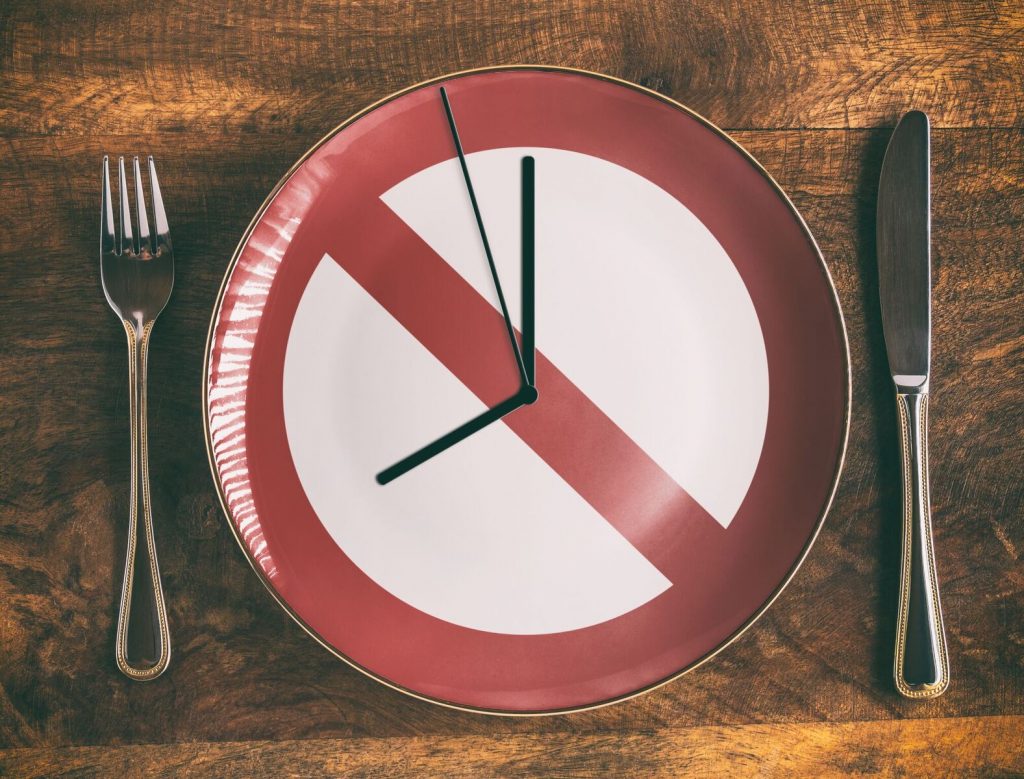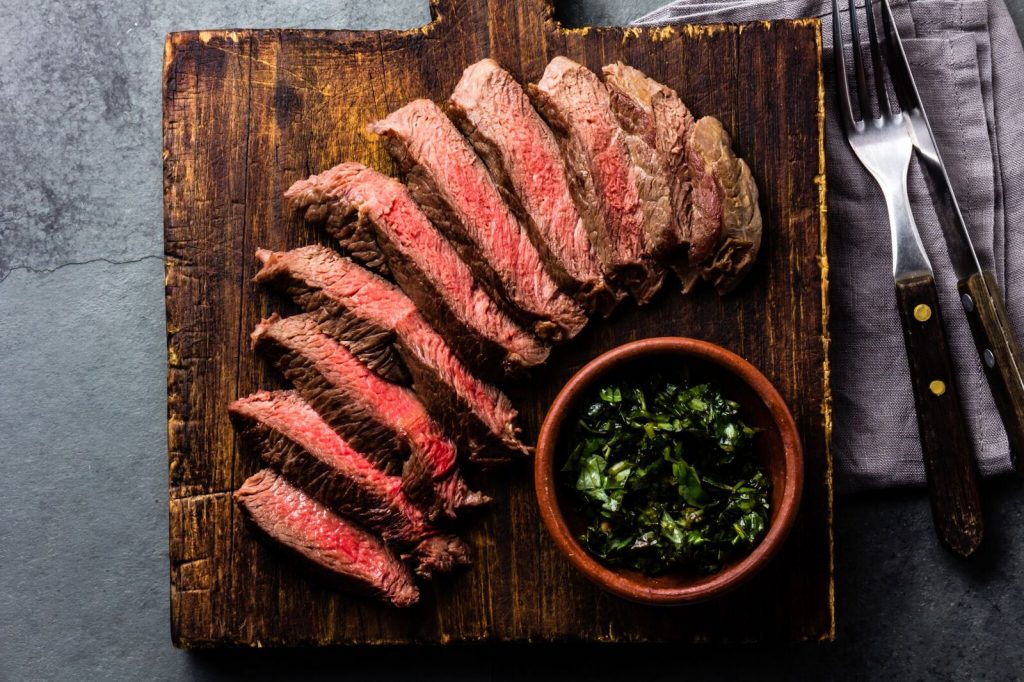Have you ever wondered?
- My friend eats way more than me, but he never gains weight!
- I eat the exact same calories as my work colleague, but she loses more weight than I do!
- Every time I diet and lose weight, I always regain it, even though I eat healthy.
- Is it because I have diabetes and they don’t?
If so, I bet your friends, dietitian, doctor, partner and work colleagues say…
- You must be eating more than you’re saying.
- There’s no such thing as a “slow metabolism”.
- You’re not trying hard enough.
- It’s because of the diabetes medication, especially insulin, it’s working against you.

Are you feeling a little frustrated by it all?
Want to understand what’s going on?
Want to discover how to break the yo-yo dieting cycle?
As you read this article, you will start to realise you were right about a few things,
- You will have a “slower metabolism” after losing weight, especially if you dieted without strength training.
- You find it harder to maintain the same weight as your naturally lean friends.
- Diabetes medication may be adding to your challenge.

Want to know how to overcome these challenges?
Let’s go…
I’ve distilled ten years of clinical experience as a Diabetes Educator and body transformation coach into 10 fundamental principles every person living with diabetes must follow in order to lose body fat and keep off it for good.
1. There is no ‘BEST’ fat loss regime.
If you consume fewer calories than you expend, you will lose weight (1, 5). You can lose weight equally effectively with the Zone diet, Atkins diet, Ornish diet, or anything else if you achieve a consistent kcal deficit (1,5).
But clinical experience has highlighted a special consideration when it comes to Diabetes. You must pay attention to macronutrient consistency (carbs, fat, and protein), to ensure glucose stability. If you have diabetes you can choose any diet type you prefer, but you must be macronutrient consistent from meal to meal, and day to day.

2. The best diet regimen is the one you can stick to properly, for the longest (1, 2, 5).
This varies from person to person based on the food preference, psychology (all or nothing person vs. person of moderation), environment, food availability, social support, and accountability. So pick the diet type that is easiest for you follow, and suits your lifestyle.
If you don’t know how to build your own diet check out these two articles.
THE BIKINI BODY DIET PLAN FOR WOMEN WITH DIABETES | CALORIES, MACROS AND SUPPLEMENTS.
3. You must proactively adjust your diabetes medication as you lose weight.
This prevents too many hypos and consuming extra kcal that set you back. It’s not usually the 15 grams of quick acting carbs that’s the problem. It’s raiding the fridge due to an insatiable hunger.

4. If you adhere strictly to the plan, you can lose weight consistently for the first 6 months.
Usually about 10% of body weight. So if 200 pounds, lose 20 pounds. If 70kg, lose 7kg.
5. Expect a plateau at around 6 to 12 months in. (2, 5).
6.At 12-24 months’ weight is usually regained, often back to where it started for 80-90% of people. (2)
This was shown clearly in a Randomised Control Trial that had 811 people follow an energy-restricted diet strictly, for two years. They found the 80% who stuck to the diet (20% dropped out) lost an average of 6.6kg in the first year, but regained 1.2kg by the end of the second year, to lose 4.2kg.
Only 15% or the study participants kept 10% of body weight off at the two-year point. Even though they were supposedly in an energy restriction according to the standard metabolic formulas. (5)
Sound familiar?

7. The only people who keep weight off at 24 months are those who significantly increase their physical activity level (3).
Increase to a level way above that of the average person, and much more than they did previously. In short, you must increase your activity level for life, not just for 6 to 12-weeks diet period, if you want to keep the weight off for good. (4)
8. Be slow, diligent and tactful.
Semi-starvation is the guaranteed way to fast-track weight regain.
You must lose weight slowly, so the vast majority of the loss is fat.
This is best achieved by consistently being in a 500-700kcal daily deficit over a long period of time. Not a 1000-1500kcal daily deficit for a couple of months, following the latest detox or juice cleansing diet.
Second, you must challenge your body by resistance training. This will make sure your lean muscle is retained. This will give you the greatest chance of keeping the fat off in the long term.
So that begs the question:
WTF happens at six months?
You may be thinking…
” I am still in a calorie deficit because I am following the diet prescribed by the Dietitian, Personal Trainer, Doctor, or Online Guru. They have worked out my kcal requirement correctly, right?”
“Why am I not continuing to lose weight, and when I go back up to maintenance calories, why do I start regaining the weight I have lost?”
Ready for it…
When you lose 10% of body weight, your daily calorie burn drops by 25%. (2)
If you use the standard metabolic equations for working out calorie requirements, and factored in the initial weight loss, the drop in calorie burn should only be 10%. (2)
So where is the extra 15% drop coming from?
Consider this:
When you lose 10% of your body weight, key hormones that determine basal metabolic rate plummet, such as thyroid hormone. Also, hormones, such as Leptin, that tell your brain your body has plenty of energy supplies drop (2).
In short, your hormones work against you losing any more weight.
Secondly:
Your level of NEAT (Non-Exercise Activity Thermogenesis) drops off the face of the earth. You stop fidgeting, getting up to go to the toilet, laughing, wriggling around and taking the stairs. The reduction in NEAT accounts for 80% of the problem (2).
Here is the nasty truth that you have always probably known, despite being told otherwise.
If you have lost 10% body fat and achieved the same weight as your friend, this reduction of 20-25% in daily calorie burn is persistent, for the very long term.
This means you will have to eat 20-25% less than your friend, who has always been that weight, to maintain the same weight.
Studies have followed people who have managed to maintain their 10% weight over the long term, to see if their metabolism re-boots, to blast away the 20-25% disadvantage.
Guess what?
The people who had lost 10% or more and kept it off still burned 20-25% less energy than the same weight person who was always that weight. (6) They only managed to keep it off by having a much higher activity level, and being conscious of their food intake.

Let’s put this into a real-life example.
John weighs 100kg (220lb) and his daily maintenance kcal requirement is 3000kcal.
He wants to lose 10% (10kg, 22lb) of weight over six months. He plans to do this with a 700kcal daily deficit for six months, therefore he plans to keep to 2300kcal.
For the first three months, he loses weight at a rate of 0.5 – 0.75kg (1.0-1.5lb) per week.
Total loss for the first three months is 7kg (15lb).
But after three months survival mode kicks in, he only loses 0.25-0.5kg (0.5-0.75lb) per week.
Total loss for months three to six is only 3kg (7lb).
He has reached his 10kg (22lb) target, but his weight loss has flatlined.
If only taking his weight loss into account when calculating his energy requirement, his new maintenance kcal at 90kg (200lb) should only be 10% less, which would be 2700kcal. So theoretically, he should still be in a 400kcal daily deficit, as he is only consuming 2300kcal per day.
But in reality, his new maintenance kcal is 25% less than when he weighed 100kg (220lb), so it’s actually 2250kcal – a whopping 450kcal less than predicted; as he is consuming 2300kcal, it makes sense why he has hit a plateau.
To rub salt in the wound, John’s best mate Phil, who has always weighed 90kg (200lb) has a maintenance kcal of 2700kcal.
So Phil can enjoy an extra 450kcal each day and not gain any weight.
To gain some perspective 450kcals would equate to…
3,150kcal per week – X2 Large Dominos Pizzas and a 2-litre bottle of coke.
12,600kcal per month – X8 Large Dominos Pizzas and x4 2-litre bottles of coke.
151,200kcal per year – X96 Large Dominos Pizzas and x48 2-litre bottles of coke.
A pretty good reason to get annoyed at your naturally lean friends. Don’t you think?
This is also why people dieting for physique contests and bodybuilding shows need to drop kcal intake more than expected in the late stages of prep. After three months of dieting, things start to get really tough, and daily intake has to drop lower than predicted by the standard metabolic equations.
You may be thinking?
That’s unfair!
Why would evolution do this to us?
Simply, it’s a survival mechanism that was fit for purpose a few hundred years ago.
Not so long ago, a weight loss of 10% signified starvation and imminent death.
But in today’s environment of unlimited food availability, this protective mechanism is no longer needed, but unfortunately our biology has not caught up.
Now you know this, you have two choices.
First option:
Take the mind-set of poor me, my lean friends can eat more than me, it’s unfair, everything is against me, I might as well not even bother…
or
Second option:
Reframe your mind-set to appreciate what an amazing adaptive machine the human body is. If you were born a few hundred years ago, this would have been a lifesaver.
Now you’re informed, it’s time to be a little more creative. The challenge is real, bring it on!
If you have chosen option one, stop reading right now, and take a long think about how your mind-set and perceptions are holding you back. If you opted for number two, carry on reading to discover the top tips to overcome the 20-25% challenge.

I’ve outlined below 10 incredibly useful tactics I use with all our diabetic coaching clients inside the Diabetic Muscle and Fitness Online Coaching Academy to increase NEAT and halt fat re-grain.
Check these out…
1. Consume 1.5-2.2g/kg (0.7-1.0g/lb) of protein daily.
- This is proven to reduce hunger and preserve lean muscle tissue.
- Be sure to spread your intake over three to five feedings a day.
- If you have type 1 diabetes, you will need to factor protein intake into your mealtime insulin dosing regimen. If you’re not sure how to do that – check out this article.
Arming yourself with a selection of delicious diabetic friendly meal plans can really help! If your serious about dropping body fat and staying lean for the rest of your life you need to check out The Ultra Lean Diabetic Cookbook.

2. Strength Train at least three times per week to prevent the loss of lean muscle mass.
This is the silver bullet in preventing weight regain. If you preserve your lean muscle mass when losing weight, the chances of fat regain are much lower.

3. Get an activity tracker and ensure at least 10,000 steps per day.
This will help you become conscious of your body trying to drive NEAT down.

4. After losing 10% of weight, increase your daily calorie intake slowly to find your new maintenance level.
Do not jump straight into a bulking phase and eat 200-300kcal more than what you think is your maintenance kcal level. I can guarantee you will overshoot by 800kcal per day.
You must find your new maintenance kcal intake by increasing kcal slowly and monitoring your weight. This is essentially the concept of reverse dieting, a topic for another day.
It is also essential to have some way of tracking food intake. If you’re not assessing, you’re guessing:
- Apps such as MyFitnessPal or Chronometer.
- Follow a meal plan specifically designed for your needs.
- Get good at flexible eating and swapping foods of similar kcal value.
5. Get your diabetes under control.
Taking too many hypos will lead to increased calorie intake that makes overcoming this 25% challenge very difficult. Here are some useful coaching tips.
- Get a plan that is consistent with macronutrients (carbs, fat, and protein), so you can easily match your diabetes medication to your meals.
- Test your basal insulin to make sure you’re not taking too much. I wrote about how to do this here.
- Test your mealtime insulin dosing regimen to make sure you are not overdosing. I wrote about how to do this here.

What if I have Type 2 diabetes?
If you have type 2 diabetes and take insulin secretagogues like Gliclazide, you may need to reduce the dose as you increase your activity and lose weight.
Always adjust your medication to compensate for exercise rather than consuming extra carbohydrate.
6. Build habits on a weekly basis to keep calories down and activity high.
For example:
- Strict ban on using any lifts.
- Do an online shop which limits foods that will sabotage your efforts.
- Cycle to work.
- Get off one or two bus/train stops early.
- Have walking meetings (use a Dictaphone).
- Ban snack food from the work coffee and tea station.
- Taste the Rainbow! Have one fruit and veg from each colour of the rainbow every day.
7. Respect the fact your food portions will need to be 25% smaller than your friends’ who have never been overweight.
This is very important when eating out.
8. Get a credible coach & mentor who can:
- Create a plan in light of the 25% disadvantage.
- Keep you accountable to your goals.
- Offer creative solutions to keep you on track.
- Understands how to integrate diabetes management with all of this.

9. Get a reliable workout buddy to prevent you from skipping exercise.
It really helps if they are a little stronger and more experienced than you.
10. Join an online community who can offer support, creative solutions, and accountability:
You’re more than welcome to join the Diabetic Muscle and Fitness Facebook Group, interact, learn and keep yourself accountable. There are thousands of people just like you inside.
Join here

TAKE HOME
- If you want to lose 10% of weight and keep it off, you will be at a 25% disadvantage compared to a friend who is at the same weight naturally.
- Change your mind-set, environment, and habits to make up for the 25%.
- Get accountable.
- Get professional support from someone who can help you integrate your diabetes with a long-term weight loss plan.
If you found this article useful please feel free to share it with people you think it may help.
References
- https://www.ncbi.nlm.nih.gov/pubmed/15632335
- https://www.ncbi.nlm.nih.gov/pmc/articles/PMC3673773/
- https://www.ncbi.nlm.nih.gov/pubmed/18223628
- https://www.ncbi.nlm.nih.gov/pubmed/21030947
- http://www.nejm.org/doi/full/10.1056/NEJMoa0804748
- https://www.ncbi.nlm.nih.gov/pubmed/18842775


